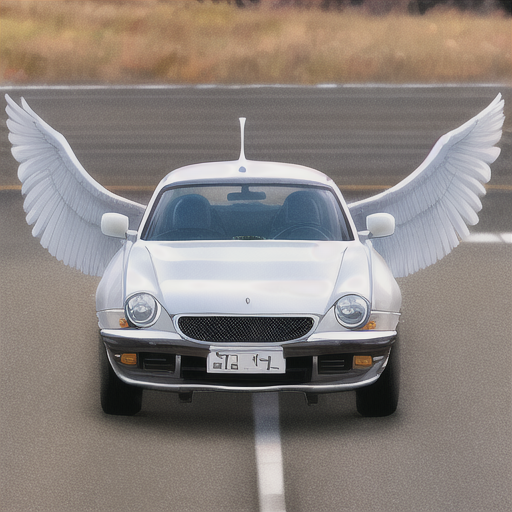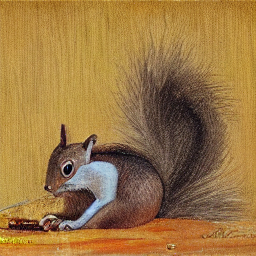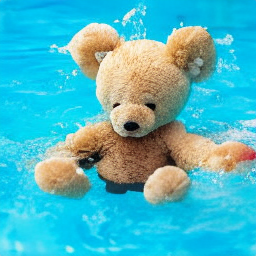t2i-adapter
Maintainer: cjwbw

3

| Property | Value |
|---|---|
| Run this model | Run on Replicate |
| API spec | View on Replicate |
| Github link | View on Github |
| Paper link | View on Arxiv |
Create account to get full access
Model overview
The t2i-adapter is a simple and small (~70M parameters, ~300M storage space) network developed by TencentARC that can provide extra guidance to pre-trained text-to-image models like Stable Diffusion while freezing the original large text-to-image models. The t2i-adapter aligns internal knowledge in text-to-image models with external control signals, allowing users to train various adapters according to different conditions and achieve rich control and editing effects. Unlike the larger Stable Diffusion model, the t2i-adapter is a relatively small and simple network that can be easily integrated as a "plug-and-play" module into other text-to-image models like Anything v4.0.
Model inputs and outputs
The t2i-adapter takes in a text prompt and an input image (or other control signals like sketches, keyposes, or segmentation maps) and generates an output image guided by the provided control signals. The input image can be used to condition the generation, allowing for effects like sketch-to-image translation, keypose-guided generation, and segmentation-based editing.
Inputs
- Prompt: The text prompt describing the desired image
- Input Image: An input image (or other control signal) to guide the text-to-image generation
- Model Checkpoint: The base text-to-image model to use, such as Stable Diffusion or Anything v4.0
- Sampling Settings: Various parameters to control the image generation process, such as number of inference steps, guidance scale, and more
Outputs
- Generated Image(s): One or more images generated based on the provided prompt and input control signal
Capabilities
The t2i-adapter can leverage various control signals like sketches, keyposes, and segmentation maps to guide the text-to-image generation process. For example, with the sketch adapter, users can provide a hand-drawn sketch and the model will generate an image matching the sketch. Similarly, the keypose adapter can generate images based on provided keypose information, and the segmentation adapter can edit images based on segmentation maps.
Additionally, the t2i-adapter can be easily integrated as a "plug-and-play" module into other text-to-image models like Anything v4.0, allowing users to combine the capabilities of the t2i-adapter with the larger and more powerful base model.
What can I use it for?
The t2i-adapter can be used for a variety of creative and practical applications, such as:
- Sketch-to-image generation: Create images from hand-drawn sketches or edge maps
- Keypose-guided generation: Generate images based on provided keypose information, such as the pose of a person or animal
- Segmentation-based editing: Edit images by modifying segmentation maps
- Sequential editing: Perform iterative editing of an image by providing additional control signals
- Composable guidance: Combine multiple control signals (e.g., segmentation and sketch) to guide the image generation process
The small size and plug-and-play nature of the t2i-adapter make it a versatile tool that can be easily integrated into various text-to-image pipelines to enhance their capabilities.
Things to try
One interesting aspect of the t2i-adapter is its ability to combine different concepts and control signals to guide the image generation process. For example, you could try generating an image of "a car with flying wings" by providing a sketch or segmentation map of a car and using the t2i-adapter to incorporate the concept of "flying wings" into the final output.
Another interesting application is local editing, where you can use the sketch adapter to modify specific parts of an existing image, such as changing the head direction of a cat or adding rabbit ears to an Iron Man figure. This allows for fine-grained control and creative experimentation.
Overall, the t2i-adapter is a powerful and versatile tool that can unlock new possibilities in text-to-image generation and editing. By experimenting with the various control signals and integrating it with other models, you can unleash your creativity and explore the full potential of this innovative technology.
This summary was produced with help from an AI and may contain inaccuracies - check out the links to read the original source documents!
Related Models

textdiffuser

1
textdiffuser is a diffusion model created by Replicate contributor cjwbw. It is similar to other powerful text-to-image models like stable-diffusion, latent-diffusion-text2img, and stable-diffusion-v2. These models use diffusion techniques to transform text prompts into detailed, photorealistic images. Model inputs and outputs The textdiffuser model takes a text prompt as input and generates one or more corresponding images. The key input parameters are: Inputs Prompt**: The text prompt describing the desired image Seed**: A random seed value to control the image generation Guidance Scale**: A parameter that controls the influence of the text prompt on the generated image Num Inference Steps**: The number of denoising steps to perform during image generation Outputs Output Images**: One or more generated images corresponding to the input text prompt Capabilities textdiffuser can generate a wide variety of photorealistic images from text prompts, ranging from scenes and objects to abstract art and stylized depictions. The quality and fidelity of the generated images are highly impressive, often rivaling or exceeding human-created artwork. What can I use it for? textdiffuser and similar diffusion models have a wealth of potential applications, from creative tasks like art and illustration to product visualization, scene generation for games and films, and much more. Businesses could use these models to rapidly prototype product designs, create promotional materials, or generate custom images for marketing campaigns. Creatives could leverage them to ideate and explore new artistic concepts, or to bring their visions to life in novel ways. Things to try One interesting aspect of textdiffuser and related models is their ability to capture and reproduce specific artistic styles, as demonstrated by the van-gogh-diffusion model. Experimenting with different styles, genres, and creative prompts can yield fascinating and unexpected results. Additionally, the clip-guided-diffusion model offers a unique approach to image generation that could be worth exploring further.
Updated Invalid Date

latent-diffusion-text2img

4
The latent-diffusion-text2img model is a text-to-image AI model developed by cjwbw, a creator on Replicate. It uses latent diffusion, a technique that allows for high-resolution image synthesis from text prompts. This model is similar to other text-to-image models like stable-diffusion, stable-diffusion-v2, and stable-diffusion-2-1-unclip, which are also capable of generating photo-realistic images from text. Model inputs and outputs The latent-diffusion-text2img model takes a text prompt as input and generates an image as output. The text prompt can describe a wide range of subjects, from realistic scenes to abstract concepts, and the model will attempt to generate a corresponding image. Inputs Prompt**: A text description of the desired image. Seed**: An optional seed value to enable reproducible sampling. Ddim steps**: The number of diffusion steps to use during sampling. Ddim eta**: The eta parameter for the DDIM sampler, which controls the amount of noise injected during sampling. Scale**: The unconditional guidance scale, which controls the balance between the text prompt and the model's own prior. Plms**: Whether to use the PLMS sampler instead of the default DDIM sampler. N samples**: The number of samples to generate for each prompt. Outputs Image**: A high-resolution image generated from the input text prompt. Capabilities The latent-diffusion-text2img model is capable of generating a wide variety of photo-realistic images from text prompts. It can create scenes with detailed objects, characters, and environments, as well as more abstract and surreal imagery. The model's ability to capture the essence of a text prompt and translate it into a visually compelling image makes it a powerful tool for creative expression and visual storytelling. What can I use it for? You can use the latent-diffusion-text2img model to create custom images for various applications, such as: Illustrations and artwork for books, magazines, or websites Concept art for games, films, or other media Product visualization and design Social media content and marketing assets Personal creative projects and artistic exploration The model's versatility allows you to experiment with different text prompts and see how they are interpreted visually, opening up new possibilities for artistic expression and collaboration between text and image. Things to try One interesting aspect of the latent-diffusion-text2img model is its ability to generate images that go beyond the typical 256x256 resolution. By adjusting the H and W arguments, you can instruct the model to generate larger images, up to 384x1024 or more. This can result in intriguing and unexpected visual outcomes, as the model tries to scale up the generated imagery while maintaining its coherence and detail. Another thing to try is using the model's "retrieval-augmented" mode, which allows you to condition the generation on both the text prompt and a set of related images retrieved from a database. This can help the model better understand the context and visual references associated with the prompt, potentially leading to more interesting and faithful image generation.
Updated Invalid Date

vq-diffusion

20
vq-diffusion is a text-to-image synthesis model developed by cjwbw. It is similar to other diffusion models like stable-diffusion, stable-diffusion-v2, latent-diffusion-text2img, clip-guided-diffusion, and van-gogh-diffusion, all of which are capable of generating photorealistic images from text prompts. The key innovation in vq-diffusion is the use of vector quantization to improve the quality and coherence of the generated images. Model inputs and outputs vq-diffusion takes in a text prompt and various parameters to control the generation process. The outputs are one or more high-quality images that match the input prompt. Inputs prompt**: The text prompt describing the desired image. image_class**: The ImageNet class label to use for generation (if generation_type is set to ImageNet class label). guidance_scale**: A value that controls the strength of the text guidance during sampling. generation_type**: Specifies whether to generate from in-the-wild text, MSCOCO datasets, or ImageNet class labels. truncation_rate**: A value between 0 and 1 that controls the amount of truncation applied during sampling. Outputs An array of generated images that match the input prompt. Capabilities vq-diffusion can generate a wide variety of photorealistic images from text prompts, spanning scenes, objects, and abstract concepts. It uses vector quantization to improve the coherence and fidelity of the generated images compared to other diffusion models. What can I use it for? vq-diffusion can be used for a variety of creative and commercial applications, such as visual art, product design, marketing, and entertainment. For example, you could use it to generate concept art for a video game, create unique product visuals for an e-commerce store, or produce promotional images for a new service or event. Things to try One interesting aspect of vq-diffusion is its ability to generate images that mix different visual styles and concepts. For example, you could try prompting it to create a "photorealistic painting of a robot in the style of Van Gogh" and see the results. Experimenting with different prompts and parameter settings can lead to some fascinating and unexpected outputs.
Updated Invalid Date

t2i_cl

1
t2i_cl is a text-to-image synthesis model that uses contrastive learning to improve the quality and diversity of generated images. It is based on the AttnGAN and DM-GAN models, but with the addition of a contrastive learning component. This allows the model to better capture the semantics and visual features of the input text, resulting in more faithful and visually appealing image generation. The model was developed by huiyegit, a researcher focused on text-to-image synthesis. It is similar to other state-of-the-art text-to-image models like stable-diffusion, t2i-adapter, and tedigan, which also aim to generate high-quality images from textual descriptions. Model inputs and outputs t2i_cl takes a textual description as input and generates a corresponding image. The model is trained on datasets of text-image pairs, which allows it to learn the association between language and visual concepts. Inputs sentence**: a text description of the image to be generated Outputs file**: a URI pointing to the generated image text**: the input text description Capabilities The t2i_cl model is capable of generating photorealistic images from a wide range of textual descriptions, including descriptions of objects, scenes, and even abstract concepts. The contrastive learning component helps the model better understand the semantics of the input text, leading to more faithful and visually appealing image generation. What can I use it for? The t2i_cl model could be useful for a variety of applications, such as: Content creation**: Generating images to accompany text-based content, like blog posts, articles, or social media posts. Prototyping and visualization**: Quickly generating visual concepts based on textual descriptions for design, engineering, or other creative projects. Accessibility**: Generating images to help convey information to users who may have difficulty reading or processing text. Things to try With t2i_cl, you can experiment with generating images for a wide range of textual descriptions, from simple objects to complex scenes and abstract ideas. Try providing the model with detailed, evocative language and see how it responds. You can also explore the model's ability to generate diverse images for the same input text by running the generation process multiple times.
Updated Invalid Date